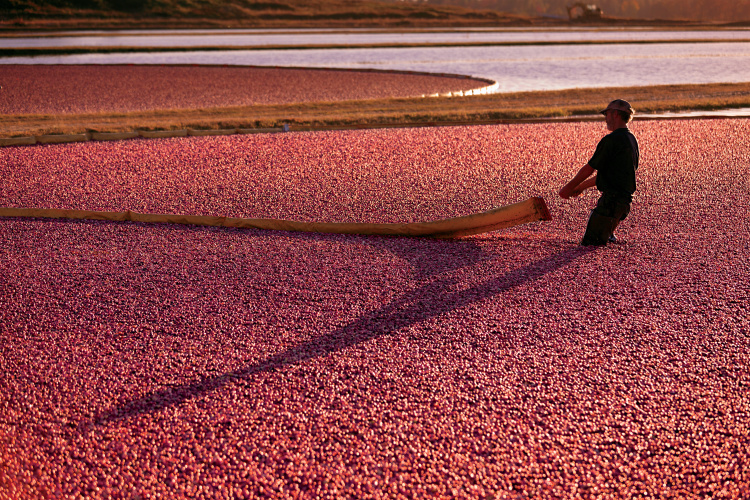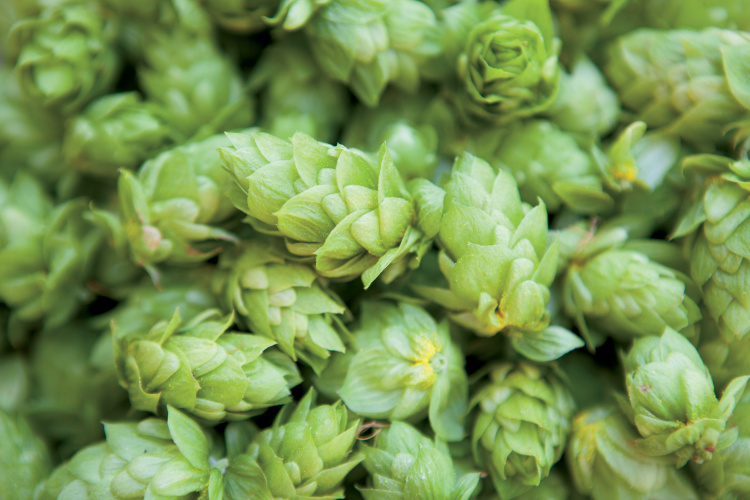Home > Wisconsin > Wisconsin Crops & Livestock > Wisconsin Agriculture is Growing Together
Wisconsin Agriculture is Growing Together
In partnership with: Wisconsin Department of Agriculture, Trade and Consumer Protection.
 When most people hear the words “Wisconsin agriculture,” they immediately think of cheese. In fact, the state ranks first in the nation and fourth in the world in cheese production. However, while Wisconsin has well earned its reputation as the cheese capital of the U.S., the agriculture industry encompasses so much more.
When most people hear the words “Wisconsin agriculture,” they immediately think of cheese. In fact, the state ranks first in the nation and fourth in the world in cheese production. However, while Wisconsin has well earned its reputation as the cheese capital of the U.S., the agriculture industry encompasses so much more.
Wisconsin agriculture contributes a whopping $88.3 billion to the state’s economy annually – with at least $43.4 billion earned by the dairy industry alone – and provides 413,500 jobs, or nearly 12 percent of the state’s total employment, in fields such as management and business, science and engineering, forestry production, communications, and more.
Hardworking farmers operate around 69,000 farms in Wisconsin on nearly 14.5 million acres of land. These farms produce some of the state’s top commodities, such as milk, corn, cattle and calves, soybeans, potatoes, cranberries and more. And though they may not be among the Badger State’s top 10 commodities, other important commodities rank the state first in the nation, including mink pelts and snap beans for processing and milk goats. Wisconsin ranks second in the nation in milk production, Italian cheese, mozzarella cheese, oats and milk cows, and third in several other commodities.
Additionally, Wisconsin continues to be a leader in organic production, ranking No. 2 in total number of organic farms with 1,228 operations – nearly 9 percent of the nation’s overall organic farms. But while the producers of these crops are essential to Wisconsin’s success, it wouldn’t be possible without other agricultural commodity groups and entities.
The Wisconsin Department of Agriculture, Trade and Consumer Protection; University of Wisconsin System; Wisconsin Technical College System; and many more all play a crucial role in working together to promote agriculture. Whether coming up with marketing plans to promote local products, helping farmers utilize technology and best management practices or educating consumers on the importance of agriculture in our everyday lives, Wisconsin’s industry could not survive without the cooperation of everyone involved.
With top-notch producers and education programs, innovative solutions, value-added products and cooperation among partners, Wisconsin is poised for continued agricultural success.
 Hop to It
Hop to It
Raise a glass to Wisconsin’s burgeoning hops industry. With an increasing demand statewide and nationwide for local food, so, too, has the demand for local brews grown.
Hops production in the Badger State goes back about two centuries, when Sauk County was responsible for one-fifth of the world’s hops production. However, a lack of knowledge about hops and poor farming practices led to its decline in the late 1800s. Producers like Gorst Valley Hops are helping the crop make a comeback, as well as groups like the Wisconsin Hop Exchange. Gorst Valley is committed to providing education, outreach, processing services and more to growers and brewers in Wisconsin and the Midwest. The Wisconsin Hop Exchange was founded for hop farmers to help each other, offering knowledge and experiences that aid the state in growing and selling quality hops.
Hops are used as a flavoring agent for beer, giving each style its unique taste, whether bitter, citrusy or something else.
Standing Tall
Towering forests cover approximately 16 million acres in Wisconsin – close to half of the state’s land area. These forests provide jobs, contribute to the economy, and offer recreational activities for consumers and habitat for wildlife. In fact, Wisconsin’s forestry industry is valued at $20 billion per year, with more than 62,200 full-time jobs in forestry and forest products.
Keeping forests healthy and protecting habitat calls for good forestry management. This means promoting diversity in tree species and age classes of trees, which helps improve wildlife habitat. Keeping wildlife healthy in turn sustains hunting for the state, which is a big pull for Wisconsin’s tourism industry and an important part of our heritage.
Learn more about the state’s forestry sector at gltpa.org.
 High on the Hog
High on the Hog
Pork is a big player in the Badger State. In 2015, Hogs contributed $160.8 million to the state’s economy.
Additionally, Wisconsin had a total inventory of 320,000 hogs in 2015.
Not only is the industry good for the state, but it’s good for consumers as well. Pork tenderloin and skinless chicken breasts have the same total fat content, and a 3-ounce serving provides protein, thiamin, vitamin B6, phosphorus and niacin.
Wisconsin also takes the top spot in the nation in the number of farms raising organic hogs and pigs. Learn more about the pork industry at wppa.org.



